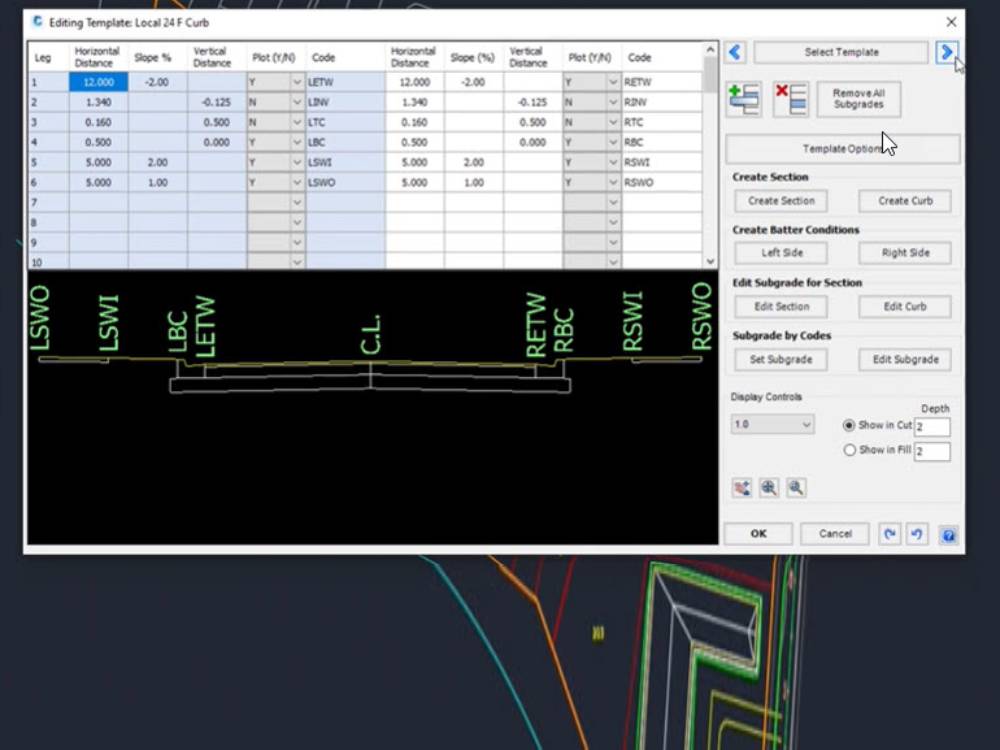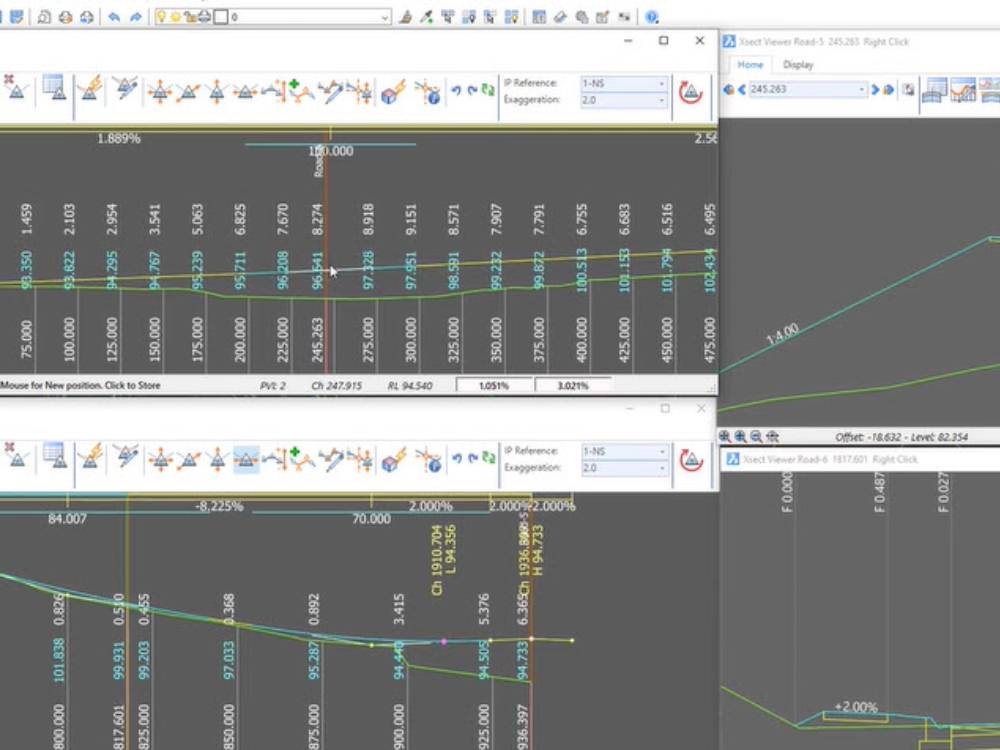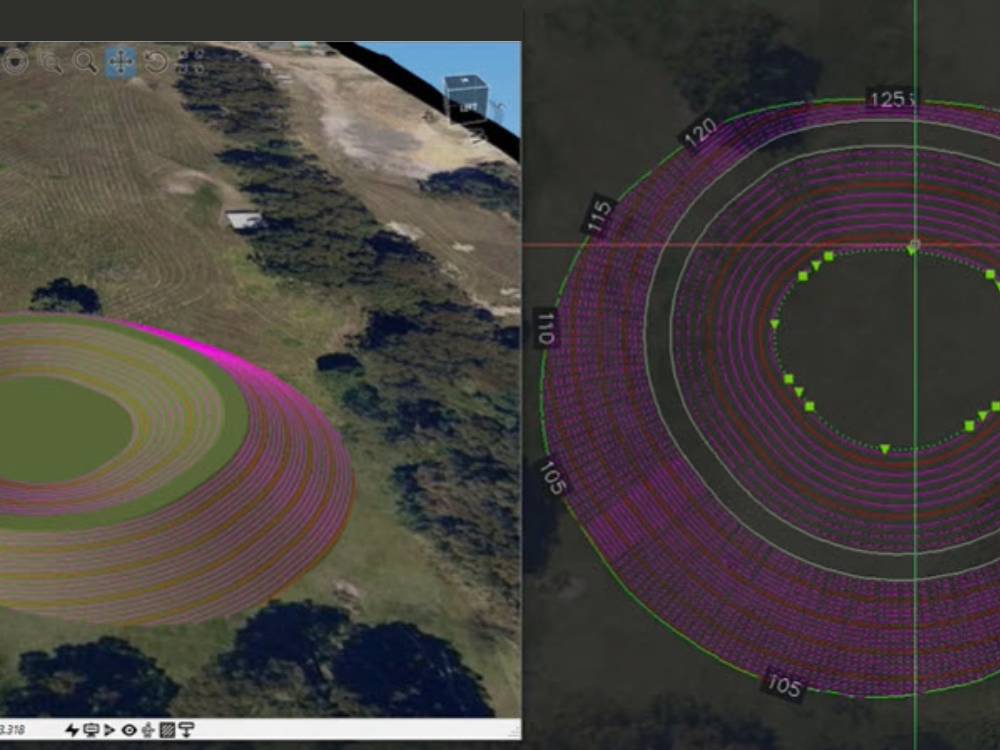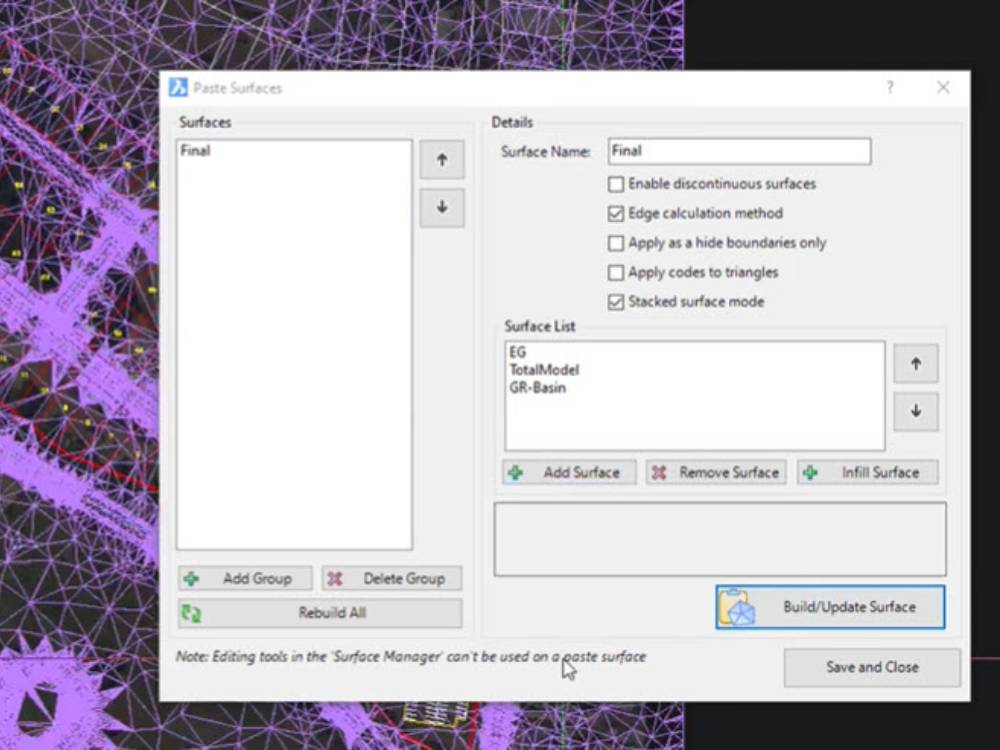Surfaces From Satellite Data, Point Files And Civil 3D
Civil Site Design Plus offers all of the standard tools for creating surfaces from 3D faces, 3D points, contours and point files. You can easily configure the outputs to your standards with the COGO Points features
Civil Site Design Plus loads Civil 3D surfaces and alignments via LandXML.
The satellite to surface feature will geo-reference your drawing and will use Google elevation data as well as imagery from multiple sources to generate a surface and overlay the image in just minutes.

Templates Eliminate Assemblies
Templates provide an intuitive way to define your road, curb, sidewalks, pond elements and related grading polylines.
They replace the need to build out complex assemblies and can be easily customized to meet specific project needs
Civil Site Design Plus provides a number of state specific templates that can be easily configured to conform to your standards.
Automated Road Network Design
Once your alignments have been created, you can apply a template and generate the design for an entire subdivision with a single mouse click. You can also create all of your curb returns with a single mouse click saving you hours of time.
This time saving process creates an initial vertical design for each road, applies your default template and allows you to view plan, profile and cross-sections simultaneously.
All are tied together so changing the vertical design of one road updates all of the connected profiles.


Interactive, Intuitive Design Tools
The interactive design tools allow you to simultaneously access multiple windows of your design. You can open multiple profile views including curb returns and observe changes as a profile is updated. Same with cross-section views.
The model viewer tool allows you to see the changes rendered in real time providing an intuitive perspective that helps experienced designers and greatly increases the productivity of new designers.
Real Time Interactive Visualization
The unique Model Viewer not only assists your design process with real time rendering and visualization, it has a number of powerful analysis tools including line of sight analysis and reporting, automated line marking which can be exported to your CAD drawing,
For those who want to render a design for visualization, you can extrude buildings, insert objects like street lights and vehicles and much more.
And you can easily create videos with fly overs that you can share with your clients.


Grading Tools
Simply using polylines and templates, the grading tools are great for modelling anything from basins, retaining walls, ditches, and much more.
The Vertical Grading Editor or Grid View can be used to manage the vertical design, while the horizontal geometry can be simply grip edited with real time updates in the drawing & model viewer.
Pipe Design
The pipe design module allows you to easily layout your design with simple polylines, will assign pipes and structures and will generate your network automatically,
The Civil Site Design Plus pipe designer, provides a powerful interface that displays pipes in relationship to the ground surface. Pipes are designed automatically based on minimum slope and design flows. Obstructions from other utilities are displayed and color coded based on minimum clearances.
Incoming pipes are also displayed and will control the manhole invert where appropriate.


Surface Pasting & Exchange
As you build out your designs, you will often have multiple surfaces such as existing ground, mass grading for a site, ponds, lots and building pads.
Civil Site Design Plus provides an intuitive interface to create new surfaces by simply pasting the individual surfaces in order.
When working with BricsCAD BIM, Civil Site Design Plus can exchange surfaces to and from BricsCAD.
Plan/Profile and Cross Section Generation
Civil Site Design Plus will generate your profiles, plan profile sheets and cross-sections for you with a modifiable label styles that can be modified to meet your drafting standards.

